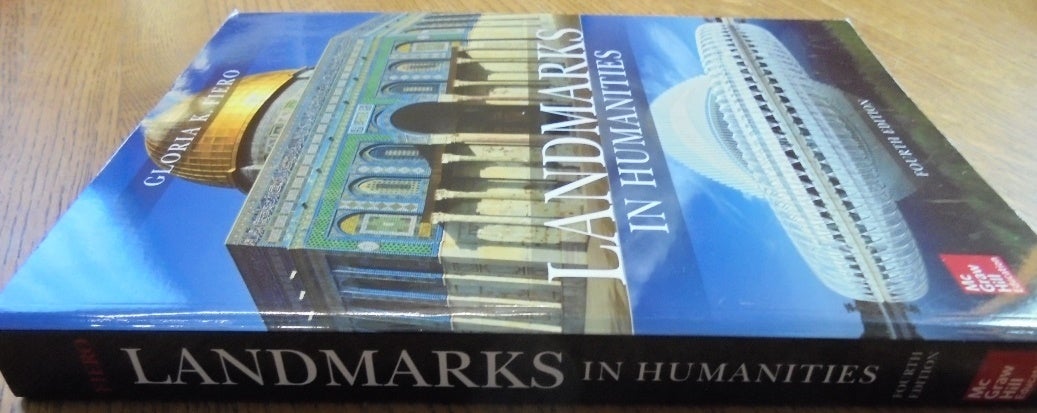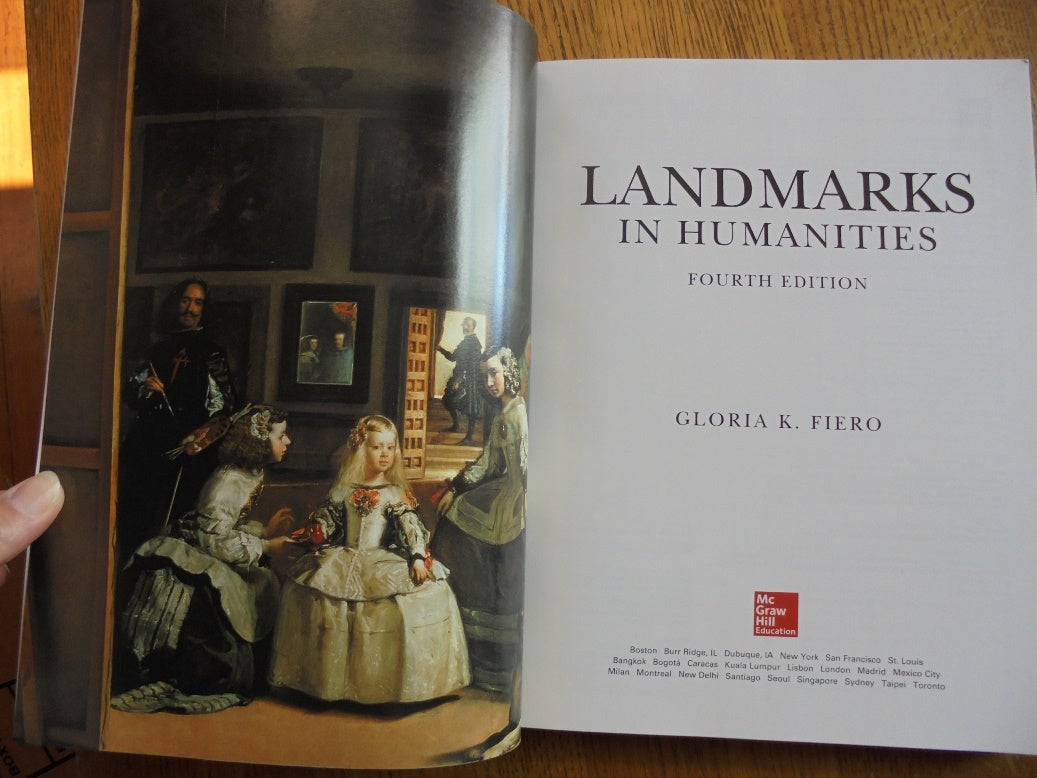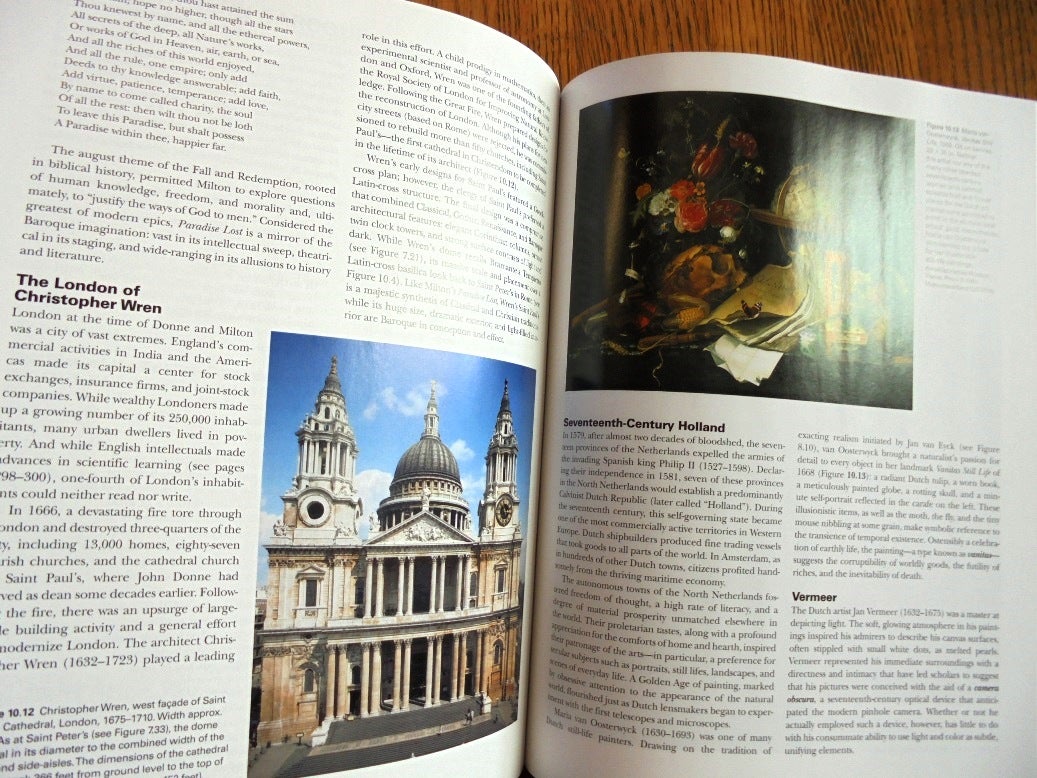Landmarks in Humanities 4th Edition embarks on an extraordinary journey, unveiling the profound significance of landmarks in shaping human civilization. From ancient historical sites to awe-inspiring natural wonders, this comprehensive volume delves into the diverse tapestry of landmarks that have left an indelible mark on our collective memory.
Through meticulous research and captivating storytelling, this edition explores the historical, cultural, and educational value of landmarks, showcasing their role in fostering a sense of identity and community. Moreover, it examines the challenges and strategies involved in preserving these invaluable treasures, ensuring their legacy for generations to come.
Historical Context

Landmarks have played a pivotal role in human history, serving as symbols of cultural identity, historical significance, and architectural prowess. From ancient pyramids to modern skyscrapers, landmarks have shaped the physical and cultural landscapes of civilizations.
Landmarks have been used to commemorate important events and people, such as the Statue of Liberty in New York City, which was gifted by France to celebrate the centennial of the signing of the Declaration of Independence. Other landmarks, like the Great Wall of China, were built for defensive purposes, but have since become iconic symbols of national pride and cultural heritage.
Significance of Landmarks
Landmarks have had a profound impact on human civilization, serving various purposes:
- Historical Markers:Landmarks provide a tangible connection to the past, allowing us to trace the evolution of human societies and cultures.
- Cultural Symbols:Landmarks represent the values, beliefs, and aspirations of a particular culture, serving as a source of collective identity and pride.
- Architectural Wonders:Many landmarks are architectural marvels, showcasing the ingenuity and skill of human builders, and inspiring awe and admiration.
- Economic Drivers:Landmarks can attract tourists and generate revenue, contributing to local economies and supporting the preservation of cultural heritage.
Types of Landmarks
Landmarks in humanities encompass a diverse range of sites and monuments that hold significant historical, cultural, or natural value. These landmarks serve as tangible reminders of the past, embody cultural heritage, and inspire awe and wonder.
The designation of a site as a landmark is often based on specific criteria, such as:
- Historical significance: Sites associated with major historical events, figures, or periods.
- Cultural significance: Monuments that represent a particular culture’s beliefs, values, or traditions.
- Architectural or artistic merit: Buildings or structures that showcase exceptional design, craftsmanship, or artistic value.
- Natural beauty or scientific importance: Landscapes, geological formations, or ecosystems that possess unique or awe-inspiring qualities.
Historical Sites
Historical sites are places that have witnessed significant historical events or are associated with important figures from the past. These sites provide a tangible connection to the past and help us understand the evolution of human societies and cultures.
Examples of historical sites include:
- The Great Wall of China: A massive fortification built to protect China from invaders.
- The Acropolis in Athens: The ancient citadel that was the center of Athenian civilization.
- The Pyramids of Giza: The monumental tombs of ancient Egyptian pharaohs.
Cultural Monuments
Cultural monuments are structures or objects that represent a particular culture’s beliefs, values, or traditions. These monuments serve as symbols of cultural identity and heritage, providing insights into the lives and customs of past societies.
Examples of cultural monuments include:
- The Taj Mahal in India: A mausoleum built by a Mughal emperor in memory of his wife.
- The Forbidden City in Beijing: The former imperial palace of the Chinese emperors.
- The Colosseum in Rome: An ancient amphitheater used for gladiatorial contests.
Natural Wonders, Landmarks in humanities 4th edition
Natural wonders are landscapes, geological formations, or ecosystems that possess unique or awe-inspiring qualities. These wonders showcase the beauty and diversity of the natural world and inspire a sense of wonder and appreciation for the environment.
Examples of natural wonders include:
- The Grand Canyon in the United States: A vast canyon carved by the Colorado River.
- The Great Barrier Reef in Australia: The world’s largest coral reef system.
- Mount Everest in Nepal: The highest mountain in the world.
Preservation and Conservation: Landmarks In Humanities 4th Edition

Preserving and conserving landmarks is crucial for safeguarding our cultural and historical heritage. It ensures that future generations can appreciate and learn from these significant sites.
Preservation involves maintaining a landmark’s original appearance and structure, while conservation focuses on protecting its integrity and preventing deterioration.
Challenges in Preservation
Preserving landmarks presents various challenges:
- Environmental Factors:Exposure to elements like rain, wind, and pollution can damage landmarks over time.
- Human Activities:Vandalism, neglect, and improper restoration can threaten the integrity of landmarks.
- Economic Constraints:Preserving landmarks can be costly, and funding may be limited.
Strategies for Preservation
To address these challenges, preservation strategies include:
- Restoration:Restoring landmarks to their original condition, using materials and techniques that match the original design.
- Maintenance:Regular upkeep, such as cleaning, repairs, and structural reinforcement, to prevent deterioration.
- Adaptive Reuse:Finding new uses for historic buildings while preserving their architectural integrity.
Examples of Successful Preservation
Successful preservation efforts include:
- Taj Mahal, India:Regular cleaning and restoration have preserved this iconic mausoleum.
- Notre Dame Cathedral, France:After a devastating fire, extensive restoration efforts are underway to preserve its architectural integrity.
- Acropolis, Greece:Continuous conservation efforts have protected this ancient citadel from environmental damage and human activities.
Cultural and Educational Value

Landmarks possess immense cultural and educational value, serving as tangible connections to the past and catalysts for fostering a sense of identity and community. They embody the collective memory and heritage of a society, showcasing its artistic, architectural, and historical achievements.
Through their preservation, landmarks provide opportunities for historical education and cultural immersion. They serve as open-air classrooms, where visitors can engage with the physical remnants of the past and gain insights into the lives and experiences of previous generations.
Fostering Identity and Community
Landmarks play a pivotal role in shaping local and national identities. They become symbols of pride and attachment, evoking a sense of belonging among community members. The presence of historical landmarks fosters a connection to the past, providing a tangible link to the struggles, triumphs, and traditions of a region.
Examples abound of landmarks serving as symbols of cultural identity. The Great Wall of China, for instance, represents the resilience and ingenuity of the Chinese people, while the Taj Mahal in India embodies the grandeur and architectural prowess of the Mughal Empire.
Educational Value
Landmarks offer invaluable educational opportunities, particularly in the fields of history and cultural studies. They provide concrete examples of architectural styles, engineering techniques, and artistic expression from different eras.
Many landmarks have been transformed into museums or heritage sites, offering guided tours, interactive exhibits, and educational programs. These initiatives allow visitors to delve into the historical context and cultural significance of the landmarks, gaining a deeper understanding of the past and its impact on the present.
Examples of landmarks used for educational purposes include the Tower of London, which showcases British history through its various roles as a royal palace, prison, and execution site; and the Palace of Versailles, which provides insights into the opulent lifestyle and political intrigues of the French monarchy.
Tourism and Economic Impact
Landmarks play a pivotal role in tourism, attracting visitors from around the world. They serve as iconic destinations, offering unique experiences and cultural insights.Landmarks can significantly contribute to local economies by generating revenue through tourism-related activities. These include ticket sales, guided tours, transportation, accommodation, and dining.
The presence of landmarks can also stimulate investment in infrastructure, such as hotels, restaurants, and transportation networks.
Examples of Leveraging Landmarks for Tourism and Economic Development
- The Eiffel Tower in Paris, France, attracts millions of tourists annually, contributing billions of euros to the city’s economy.
- The Great Wall of China, a UNESCO World Heritage Site, has been instrumental in promoting tourism in China, boosting local businesses and infrastructure development.
- The Statue of Liberty in New York City, USA, is a symbol of freedom and democracy, attracting tourists from around the world and generating significant revenue for the city.
Emerging Trends
The field of landmarks is constantly evolving, with new technologies and approaches emerging all the time. These trends are shaping the way that we preserve, promote, and experience landmarks.
One of the most significant trends in the field of landmarks is the increasing use of technology. Digital tools are being used to create virtual tours of landmarks, to develop educational programs, and to monitor the condition of historic buildings.
New Technologies
- Virtual reality (VR) and augmented reality (AR)are being used to create immersive experiences that allow people to explore landmarks from anywhere in the world.
- 3D scanningis being used to create detailed models of landmarks, which can be used for preservation, restoration, and education.
- Dronesare being used to inspect landmarks and to capture aerial footage.
Another trend in the field of landmarks is the increasing focus on sustainability. Landmarks are often energy-intensive, and they can have a significant impact on the environment. As a result, there is a growing movement to make landmarks more sustainable.
Sustainability
- Green building techniquesare being used to reduce the environmental impact of landmarks.
- Renewable energy sourcesare being used to power landmarks.
- Water conservation measuresare being implemented to reduce the water consumption of landmarks.
The future of landmarks is bright. As technology continues to develop, we will see even more innovative ways to preserve, promote, and experience landmarks. Landmarks will continue to be important cultural and educational resources, and they will continue to play a vital role in our communities.
FAQ Compilation
What is the significance of landmarks in shaping human civilization?
Landmarks serve as tangible reminders of our past, providing insights into the lives, cultures, and achievements of our ancestors. They inspire a sense of awe and wonder, fostering an appreciation for the ingenuity and creativity of humanity throughout history.
How are landmarks designated as such?
The designation of a site as a landmark typically involves rigorous evaluation by experts in relevant fields, such as historians, architects, and environmentalists. Criteria may include historical significance, architectural or aesthetic value, and ecological importance.
What are the challenges involved in preserving landmarks?
Preserving landmarks poses challenges such as environmental degradation, natural disasters, and human-induced threats. Conservation efforts involve implementing measures to protect and restore these sites, ensuring their longevity for future generations.